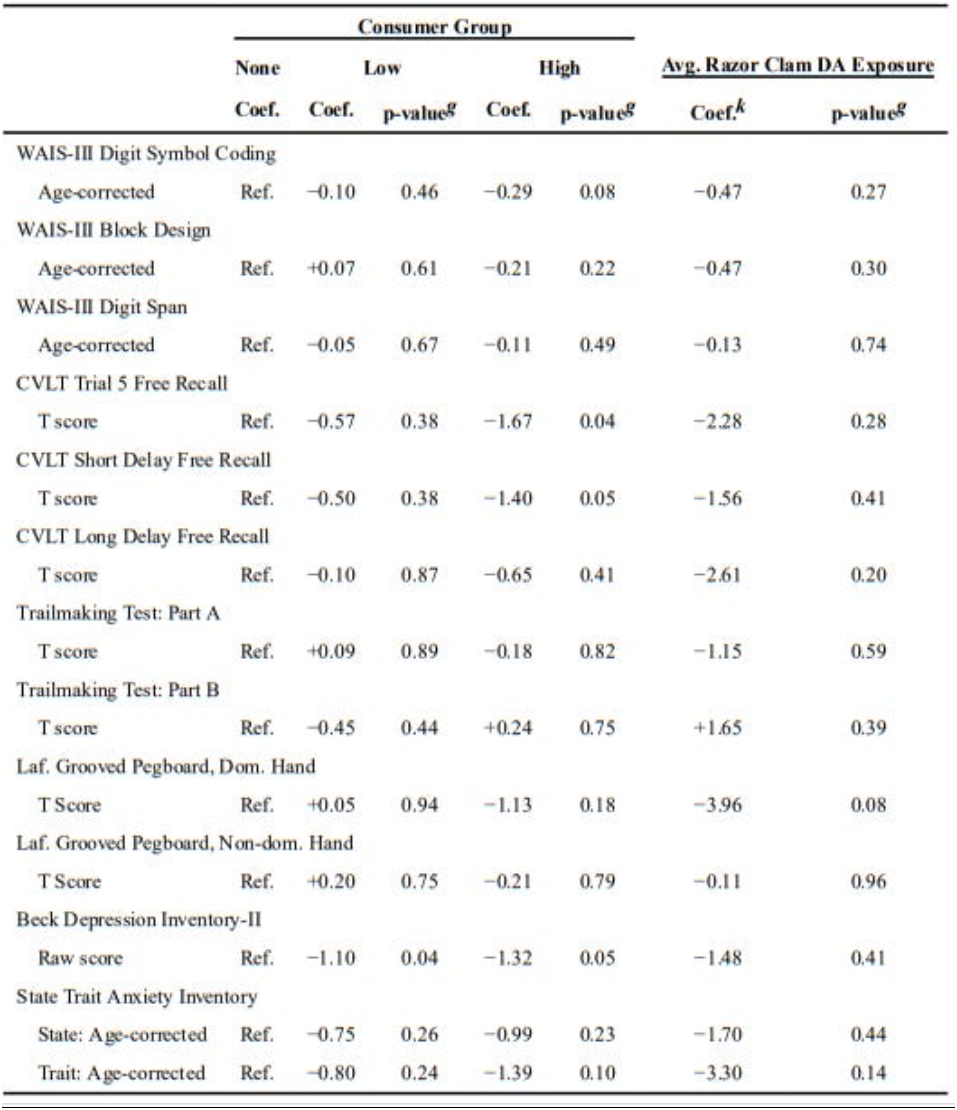Introduction
In a world where seafood is a staple of many diets, the safety of shellfish has become a growing concern. A recent study sheds light on the potential risks associated with consuming razor clams, a popular delicacy along the Pacific Northwest coast. Researchers have long known that razor clams can harbor Domoic Acid (DA), a neurotoxin that poses health risks to humans. However, the extent of the impact of chronic, low-level DA exposure on memory function has remained uncertain until now.
Background
Domoic acid, a naturally occurring toxin, entered the spotlight in 1987 following an outbreak in Montreal where people fell ill after consuming mussels contaminated with the substance. The symptoms exhibited by those affected were diverse, ranging from gastrointestinal discomfort to severe memory loss. This alarming manifestation of memory impairment within the illness led to the coining of the term "Amnesic Shellfish Poisoning" (ASP). Since its initial discovery, domoic acid has been found in various shellfish species, with razor clams identified as particularly significant carriers of the toxin. This is largely due to their unique ability to retain the toxin for prolonged periods, making them a focal point for further investigation into the potential health risks associated with domoic acid exposure.
The Study
Conducted by a collaborative team of researchers primarily affiliated with the University of Maryland and other institutions, the study delved into the cognitive effects of domoic acid (DA) exposure among a cohort of 513 adults hailing from Native American tribes with a tradition of consuming razor clams. Spanning a duration of four years, the study employed comprehensive cognitive assessments to meticulously scrutinize participants' memory function. Concurrently, the researchers meticulously tracked the participants' consumption habits of razor clams, recognizing them as a potential vector for DA exposure. Moreover, the study incorporated estimates of DA exposure, factoring in the toxin's concentration levels detected in razor clams sourced from the participants' harvesting beaches. Through this multifaceted approach, the researchers sought to unravel potential associations between razor clam consumption, DA exposure, and cognitive performance, particularly memory function, within this distinct population group.
Findings
The study's outcomes shed light on a potential relationship between high levels of razor clam consumption, defined as 15 or more clams per month, and subtle declines in specific aspects of memory function. Notably, individuals classified within the high consumption group displayed lower scores on memory recall tests in comparison to their non-consuming counterparts. However, it's crucial to note that these observed decrements remained within the spectrum of normal cognitive performance and did not reach clinically significant levels. Intriguingly, despite the known neurotoxicity of domoic acid (DA) and its association with shellfish consumption, the preliminary metric used to estimate DA exposure failed to demonstrate a discernible correlation with cognitive performance among the study participants. This unexpected finding prompts further exploration into the nuanced dynamics of DA exposure and its potential impacts on cognitive health, urging researchers to delve deeper into the intricacies of this relationship to unveil the true extent of its influence.
Implications
The study's findings not only highlight the need for continued investigation into the potential long-term impacts of domoic acid (DA) exposure through razor clam consumption but also emphasize broader implications for public health and seafood safety regulations. The observed association between high razor clam consumption and subtle declines in memory function prompts critical questions about the safety of consuming shellfish, particularly among vulnerable populations such as Native American tribes known for their reliance on traditional diets rich in seafood. As seafood consumption remains a staple in many coastal communities, understanding the potential risks posed by contaminants like DA is paramount for guiding public health policies and interventions aimed at mitigating potential health hazards. Moreover, these findings underscore the importance of ongoing surveillance and monitoring efforts to ensure the safety of seafood products and protect the health and well-being of individuals who rely on them as a dietary staple. By addressing these concerns and advancing our understanding of the complex interplay between environmental toxins, dietary habits, and cognitive health, researchers can inform targeted interventions and policies to safeguard public health and promote safer seafood consumption practices in vulnerable communities.

Conclusion
This study offers valuable insights into the relationship between razor clam consumption and memory function. While more research is needed to fully elucidate the mechanisms underlying this association, the findings highlight the importance of monitoring seafood safety and advocating for responsible harvesting practices. By continuing to investigate the impacts of environmental toxins on human health, we can better protect ourselves and future generations from potential harm.